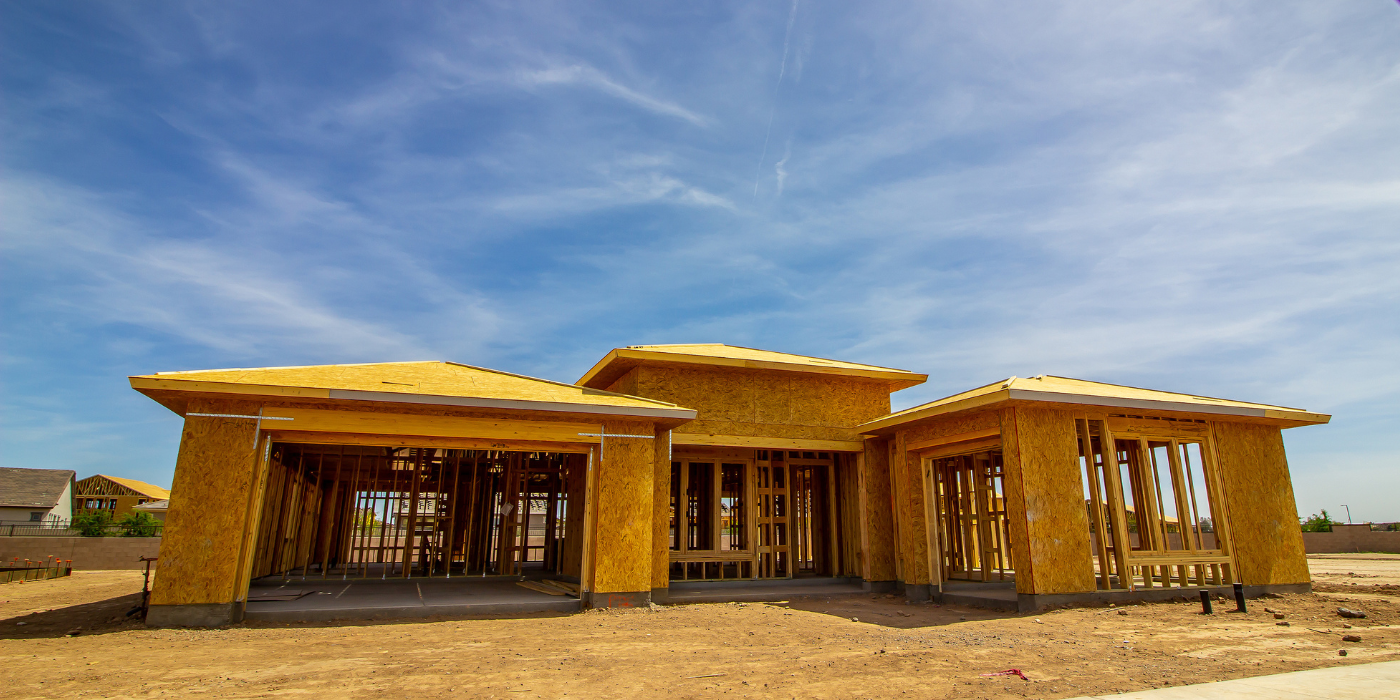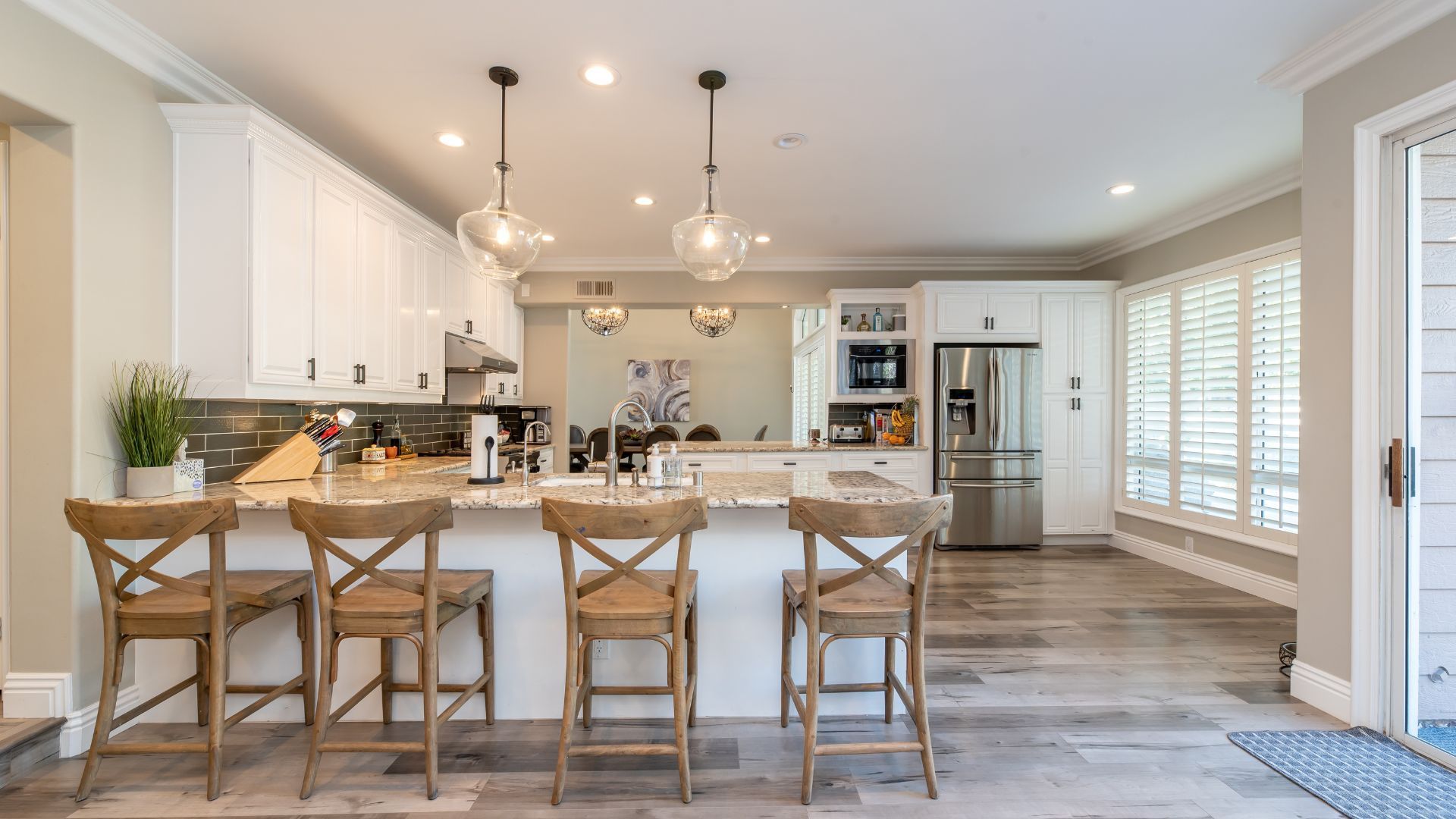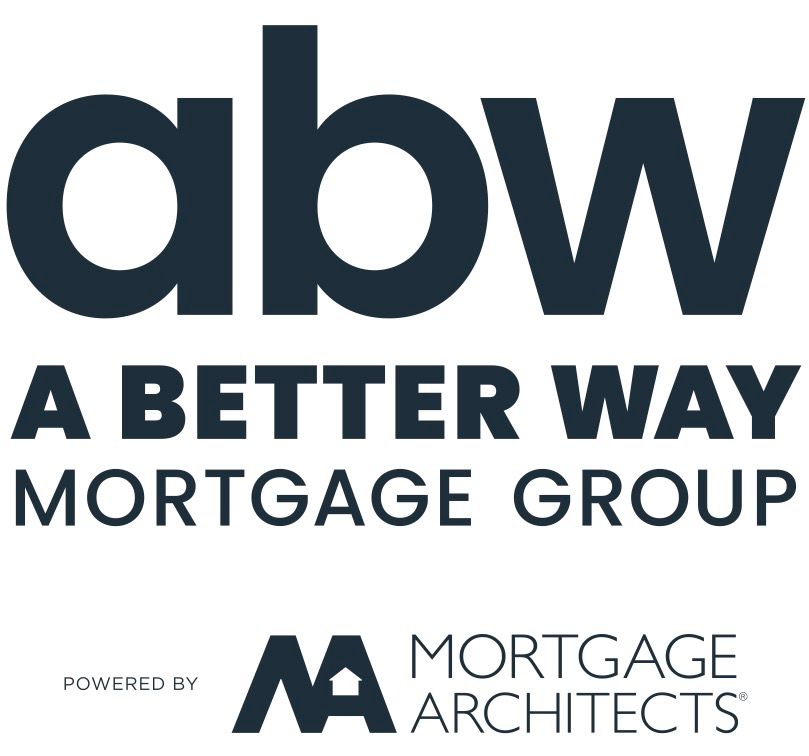ARTICLES
MORTGAGE ARTICLES
I share information here, so you can stay informed.

By Susan Au-Young
•
January 21, 2025
One of the benefits of working with an independent mortgage professional is having lots of great financing options! Rather than dealing with a single lender with one set of products, independent mortgage professionals work with multiple lenders who offer a wide selection of mortgage financing options that provide more choice. Increased choice in mortgage products is beneficial when your situation isn’t “normal,” or you don’t quite fit the profile of a standard buyer. Purchasing a new construction home through an assignment contract would be a great example of this. Purchasing a new construction home through an assignment contract can be tricky as not every lender wants the added perceived risk of dealing with this type of transaction. Most of these lenders won’t come out and say it; instead, they add a significant list of qualifying conditions to make the process harder. The good news is, there are lenders available exclusively through the broker channel that have favourable policies for assignment purchases. Here are some of the highlights: All standard purchase qualifications apply, including applicable income verification, established credit, and required downpayment Assignments can be at the original purchase price or current market value Minimum 620 beacon score with no previous bankruptcies or consumer proposals The full downpayment must come from the purchaser and not include any incentives from the seller. As far as documentation goes, the lender will want to see the original purchase agreement signed by all parties, the MLS listing, the assignment agreement signed by the builder, the original purchaser, and the new buyer. The lender will also want to see the side agreement between the original purchaser and the new buyer, including the amended purchase price. The lender will want to substantiate the value through a full appraisal. Now, as every situation is different, this list of conditions is in no way exhaustive but meant to show that assigning a new construction purchase contract is doable while highlighting some of the terms necessary to secure financing. If you’re looking to purchase new construction through an assignment contract, or if you’d like to discuss purchasing a home through traditional means, please connect anytime! It would be a pleasure to outline the mortgage products on the market that won’t limit your financing options!

By Susan Au-Young
•
January 7, 2025
You’ve most likely heard that there are two certainties in life; death and taxes. Well, as it relates to your mortgage, the single certainty is that you will pay back what you borrow, plus interest. With that said, the frequency of how often you make payments to the lender is somewhat up to you! The following looks at the different types of payment frequencies and how they impact your mortgage. Here are the six payment frequency types Monthly payments – 12 payments per year Semi-Monthly payments – 24 payments per year Bi-weekly payments – 26 payments per year Weekly payments – 52 payments per year Accelerated bi-weekly payments – 26 payments per year Accelerated weekly payments – 52 payments per year Options one through four are straightforward and designed to match your payment frequency with your employer. So if you get paid monthly, it makes sense to arrange your mortgage payments to come out a few days after payday. If you get paid every second Friday, it might make sense to have your mortgage payments match your payday. However, options five and six have that word accelerated before the payment frequency. Accelerated bi-weekly and accelerated weekly payments accelerate how fast you pay down your mortgage. Choosing the accelerated option allows you to lower your overall cost of borrowing on autopilot. Here’s how it works. With the accelerated bi-weekly payment frequency, you make 26 payments in the year. Instead of dividing the total annual payment by 26 payments, you divide the total yearly payment by 24 payments as if you set the payments as semi-monthly. Then you make 26 payments on the bi-weekly frequency at the higher amount. So let’s use a $1000 payment as the example: Monthly payments formula: $1000/1 with 12 payments per year. A payment of $1000 is made once per month for a total of $12,000 paid per year. Semi-monthly formula: $1000/2 with 24 payments per year. A payment of $500 is paid twice per month for a total of $12,000 paid per year. Bi-weekly formula: $1000 x 12 / 26 with 26 payments per year. A payment of $461.54 is made every second week for a total of $12,000 paid per year. Accelerated bi-weekly formula: $1000/2 with 26 payments per year. A payment of $500 is made every second week for a total of $13,000 paid per year. You see, by making the accelerated bi-weekly payments, it’s like you end up making two extra payments each year. By making a higher payment amount, you reduce your mortgage principal, which saves interest on the entire life of your mortgage. The payments for accelerated weekly payments work the same way. It’s just that you’d be making 52 payments a year instead of 26. By choosing an accelerated option for your payment frequency, you lower the overall cost of borrowing by making small extra payments as part of your regular payment schedule. Now, exactly how much you’ll save over the life of your mortgage is hard to nail down. Calculations are hard to do because of the many variables; mortgages come with different amortization periods and terms with varying interest rates along the way. However, an accelerated bi-weekly payment schedule could reduce your amortization by up to three years if maintained throughout the life of your mortgage. If you’d like to look at some of the numbers as they relate to you and your mortgage, please don’t hesitate to connect anytime; it would be a pleasure to work with you.

By Susan Au-Young
•
January 3, 2025
As housing affordability challenges persist across Canada, innovative solutions are reshaping the way homeowners can contribute to housing supply. Starting January 15, 2025, new mortgage insurance rule changes will allow Canadian homeowners to access insured refinancing options to create secondary suites, such as basement apartments or laneway homes. This move, announced in Budget 2024 and detailed by the Department of Finance Canada, is part of a broader strategy to increase housing density and improve affordability while offering homeowners the chance to generate additional income. Why These Changes Matter Historically, converting extra space into rental units has been both costly and mired in municipal red tape. Recent zoning reforms across Canada’s major cities, driven by Housing Accelerator Fund agreements, are reducing these barriers. The creation of secondary suites not only expands housing supply but also provides financial benefits to homeowners, such as offering seniors additional income to support aging in place. Key Parameters for the New Rules The new mortgage insurance program is designed to enable homeowners to build legal, self-contained secondary suites that comply with municipal requirements. Here are the essential details: Eligibility Requirements Homeowners must already own the property. The homeowner or a close relative must occupy one of the existing units. Additional units must not be used as short-term rentals. Project Specifications New units must be fully self-contained with separate entrances (e.g., basement suites, laneway homes). Up to four total dwelling units are allowed, including existing units. Financial Parameters The “as improved” property value must be less than $2 million. Homeowners can refinance up to 90% of the property’s value, including the enhanced value from secondary suites. The maximum amortization period is 30 years. Additional financing must not exceed the project’s costs. When Do These Rules Take Effect? Starting January 15, 2025, lenders can submit applications for mortgage insurance under these updated parameters. This applies to all eligible properties across Canada, provided the new units align with municipal zoning requirements. What This Means for Homeowners For homeowners with underutilized space, such as basements or detached garages, this new program offers an opportunity to increase property value and create a source of long-term income. By building legal secondary suites, homeowners can contribute to Canada’s rental housing market while gaining financial security. A Step Toward Housing Solutions As housing supply remains a pressing issue, these mortgage insurance changes reflect a commitment to practical, homeowner-driven solutions. Whether you’re a senior looking to age in place or a family seeking to maximize your property’s potential, these changes represent an exciting opportunity to invest in your home and your community. Stay informed and explore your options with your lender to determine if this program is right for you. The path to unlocking your property’s potential begins in 2025.

By Susan Au-Young
•
December 24, 2024
It’s a commonly held belief that if you’ve made your mortgage payments on time throughout the entirety of your mortgage term, that the lender is somehow obligated to renew your mortgage. The truth is, a lender is never under any obligation to renew your mortgage. When you sign a mortgage contract, the lender draws it up for a defined time, so when that term comes to an end, the lender has every right to call the loan. Now, granted, most lenders are happy to renew your mortgage, but several factors could come into play to prevent this from happening, including the following: You’ve missed mortgage payments over the term. The lender becomes aware that you’ve recently claimed bankruptcy. The lender becomes aware that you’re going through a separation or divorce. The lender becomes aware that you lost your job. Someone on the initial mortgage contract has passed away. The lender no longer likes the economic climate and/or geographic location of your property. The lender is no longer licensed to lend money in Canada. Again, while most lenders are happy to renew your mortgage at the end of the term, you need to understand that they are not under any obligation to do so. So how do you protect yourself? Well, the first plan of action is to get out in front of things. At least 120 days before your mortgage term expires, you should be speaking with an independent mortgage professional to discuss all of your options. By giving yourself this lead time and seeking professional advice, you put yourself in the best position to proactively look at all your options and decide what’s best for you. When assessing your options at the time of renewal, even if the lender offers you a mortgage renewal, staying with your current lender is just one of the options you have. Just because your current lender was the best option when you got your mortgage doesn’t mean they are still the best option this time around. The goal is to assess all your options and choose the one that lowers your overall cost of borrowing. It’s never a good idea to sign a mortgage renewal without looking at all your options. Also, dealing with an independent mortgage professional instead of directly with the lender ensures you have someone working for you, on your team, instead of seeking guidance from someone with the lender’s best interest in mind. So if you have a mortgage that’s up for renewal, whether you’re being offered a renewal or not, the best plan of action is to protect yourself by working with an independent mortgage professional. Please connect anytime; it would be a pleasure to work with you!

By Susan Au-Young
•
December 10, 2024
When looking to qualify for a mortgage, typically, a lender will want to review four areas of your mortgage application: income, credit, downpayment/equity and the property itself. Assuming you have a great job, excellent credit, and sufficient money in the bank to qualify for a mortgage, if the property you’re looking to purchase isn’t in good condition, if you don't have a plan, you might get some pushback from the lender. The property matters to the lender because they hold it as collateral if you default on your mortgage. As such, you can expect that a lender will make every effort to ensure that any property they finance is in good repair. Because in the rare case that you happen to default on your mortgage, they want to know that if they have to repossess, they can sell the property quickly and recoup their money. So when assessing the property as part of any mortgage transaction, an appraisal is always required to establish value. If your mortgage requires default mortgage insurance through CMHC, Sagen (formerly Genworth), or Canada Guaranty, they’ll likely use an automated system to appraise the property where the assessment happens online. A physical appraisal is required for conventional mortgage applications, which means an appraiser will assess the property on-site. So why is this important to know? Well, because even if you have a great job, excellent credit, and money in the bank, you shouldn’t assume that you’ll be guaranteed mortgage financing. A preapproval can only take you so far. Once the mortgage process has started, the lender will always assess the property you’re looking to purchase. Understanding this ahead of time prevents misunderstandings and will bring clarity to the mortgage process. Practically applied, if you’re attempting to buy a property in a hot housing market and you go in with an offer without a condition of financing, once the appraisal is complete, if the lender isn’t satisfied with the state or value of the property, you could lose your deposit. Now, what happens if you’d like to purchase a property that isn’t in the best condition? Being proactive includes knowing that there is a purchase plus improvements program that can allow you to buy a property and include some of the cost of the renovations in the mortgage. It’s not as simple as just increasing the mortgage amount and then getting the work done, there’s a process to follow, but it’s very doable. So if you have any questions about financing your next property or potentially using a purchase plus improvements to buy a property that needs a little work, please connect anytime. It would be a pleasure to walk you through the process.

By Susan Au-Young
•
November 26, 2024
Chances are if the title of this article piqued your interest enough to get you here, your family is probably growing. Congratulations! If you’ve thought now is the time to find a new property to accommodate your growing family, but you’re unsure how your parental leave will impact your ability to get a mortgage, you’ve come to the right place! Here’s how it works. When you work with an independent mortgage professional, it won’t be a problem to qualify your income on a mortgage application while on parental leave, as long as you have documentation proving that you have guaranteed employment when you return to work. A word of caution, if you walk into your local bank to look for a mortgage and you disclose that you’re currently collecting parental leave, there’s a chance they’ll only allow you to use that income to qualify. This reduction in income isn’t ideal because at 55% of your previous income up to $595/week, you won’t be eligible to borrow as much, limiting your options. The advantage of working with an independent mortgage professional is choice. You have a choice between lenders and mortgage products, including lenders who use 100% of your return-to-work income. To qualify, you’ll need an employment letter from your current employer that states the following: Your employer’s name preferably on the company letterhead Your position Your initial start date to ensure you’ve passed any probationary period Your scheduled return to work date Your guaranteed salary For a lender to feel confident about your ability to cover your mortgage payments, they want to see that you have a position waiting for you once your parental leave is over. You might also be required to provide a history of your income for the past couple of years, but that is typical of mortgage financing. Whether you intend to return to work after your parental leave is over or not, once the mortgage is in place, what you decide to do is entirely up to you. Mortgage qualification requires only that you have a position waiting for you. If you have any questions about this or anything else mortgage-related, please connect anytime. It would be a pleasure to work with you.

By Susan Au-Young
•
November 12, 2024
Let’s say you have a home that you’ve outgrown; it’s time to make a move to something better suited to your needs and lifestyle. You have no desire to keep two properties, so selling your existing home and moving into something new (to you) is the best idea. Ideally, when planning out how that looks, most people want to take possession of the new house before moving out of the old one. Not only does this make moving your stuff more manageable, but it also allows you to make the new home a little more “you” by painting or completing some minor renovations before moving in. But what if you need the money from the sale of your existing home to come up with the downpayment for your next home? This situation is where bridge financing comes in. Bridge financing allows you to bridge the financial gap between the firm sale of your current home and the purchase of your new home. Bridge financing allows you to access some of the equity in your existing property and use it for the downpayment on the property you are buying. So now let’s also say that it’s a very competitive housing market where you’re looking to buy. Chances are you’ll want to make the best offer you can and include a significant deposit. If you don’t have immediate access to the cash in your bank account, but you do have equity in your home, a deposit loan allows you to make a very strong offer when negotiating the terms of purchasing your new home. Now, to secure bridge financing and/or a deposit loan, you must have a firm sale on your existing home. If you don’t have a firm sale on your home, you won’t get the bridge financing or deposit loan because there is no concrete way for a lender to calculate how much equity you have available. A firm sale is the key to securing bridge financing and a deposit loan. So if you’d like to know more about bridge financing, deposit loans, or anything else mortgage-related, please connect anytime! It would be a pleasure to work with you.

By Susan Au-Young
•
October 29, 2024
Sometimes life throws you a financial curveball. Bankruptcy and consumer proposals happen. It doesn’t mean your life is over, and it doesn’t mean you won’t ever qualify for a mortgage again. The key to financial success here is getting things under control as quickly as possible. You must demonstrate to the potential lenders that what happened in the past won’t happen again in the future. So if you’re thinking about getting a mortgage post-bankruptcy, lenders will want answers to the following questions: How long have you been discharged? Securing a mortgage will be dependent on how long it has been since you were discharged from your bankruptcy or consumer proposal. Most lenders consider the discharge date on both to be your new ground zero. And while there is no legally defined waiting period for when you can apply for a new mortgage post-bankruptcy, what lenders will assess is how you’re managing your finances after your financial troubles. Have you established new credit? You can show lenders that they can trust you after bankruptcy by establishing new credit and managing that credit flawlessly. So as soon as you’ve been discharged, it’s a good idea to get a secured credit card and start rebuilding your credit score. To be considered completely established, you’ll want to have two years of credit history on two trade lines with a credit limit of $2500 on each trade line. You’ll also want to make sure that you have no late or missed payments. How much do you have available for a downpayment? The more money you have to put towards purchasing a property, or the more equity you have in your property in the case of a refinance, the better your chances of getting a mortgage. The more money you bring to the table, the more comfortable a lender will feel about the risk they take of losing their investment should you run into future financial difficulty. What is your total debt service ratio? Another consideration lenders will look at is how much money you make compared to the cost of making your mortgage payments. So it probably goes without saying that the more money you make compared to the amount you want to borrow, the better. Conventional or insured financing. If you’re looking to get the best mortgage products available, here are some of the things a lender will want to see: You’ve been discharged for at least two years plus a day. You’ve established your credit (as listed above). You have at least 5% down for the first $500k of the purchase and 10% down for anything over $500k. If you don’t have a 20% downpayment, you will be required to secure mortgage insurance through CMHC, Sagen (formerly Genworth), or Canada Guaranty. The cost to service the property and all your debts don’t exceed 44% of your gross income. Alternative lending As independent mortgage professionals, our job is to provide solutions and strategies for our clients. As such, in addition to dealing with many traditional lending institutions, we also have access to lenders who specialize in working with clients whose financial situation isn't all that straightforward. These private lenders offer alternative lending solutions that consider the overall strength of your mortgage application. While you won’t qualify for the best rates and terms on the market by going with an alternative lender, if you’re looking for options, you might find that alternative lending is a very reasonable solution for you. Alternative lending isn’t for everyone, but it’s an excellent solution for some, especially if you’ve gone through a bankruptcy or consumer proposal and need a mortgage before fully establishing your credit. Get in touch anytime. So whether you’re looking for a plan to help you qualify for a mortgage with the most favourable terms or if you need something more immediate. Please connect anytime. It would be a pleasure to outline your options and work on a plan to get you a mortgage.

By Susan Au-Young
•
October 18, 2024
On October 8, 2024, the government announced a new program that will take effect on January 15, 2025, allowing homeowners to refinance up to 90% of their home’s value to create secondary suites. This is a significant increase from the current refinancing limit of 80%. The program aims to provide homeowners with more flexibility to unlock their home equity and add additional legal units like basement suites or laneway homes, provided they meet municipal zoning requirements and are not used for short-term rentals. The program comes with specific guidelines, outlined by CMHC (Canada Mortgage and Housing Corporation), that include: Eligibility: Homeowners must already own their property, live in one of the existing units, and plan to add additional fully self-contained suites. Refinancing Details: Homeowners can refinance up to 90% of the property's value, including the value added by the new units. The maximum property value, once the new units are built, must not exceed $2 million. Loan Parameters: The loan-to-value limit will be 90%, and the maximum amortization period is 30 years. Any additional financing must not exceed project costs. To give an example, under this new program, if a home is valued at $800,000, homeowners could now refinance up to $720,000 for building a secondary suite—$80,000 more than the previous limit of $640,000. This program could be particularly beneficial for homeowners who have recently purchased their property and built up a moderate amount of equity, offering them an opportunity to create an income-generating suite or expand their home without needing to sell. As housing affordability continues to be a pressing issue in many parts of Canada, adding secondary suites could also contribute to easing the rental supply shortage. While this program represents a significant step forward in unlocking home equity for homeowners, we are still awaiting specific guidelines from lenders. These rules will clarify how lenders will approach refinancing applications under this program. Stay tuned for further updates as more information becomes available from financial institutions. This program is expected to spark significant interest, particularly from younger homeowners or those with growing families, as it offers a pathway to enhance both living space and long-term financial stability. Homeowners looking to leverage this new opportunity should consult with mortgage experts to fully understand the potential benefits and ensure they are making informed decisions. If you're interested in how this program could benefit you or want to explore refinancing options to add a secondary suite, get in touch with a mortgage professional today.
RECENT POSTS

By Susan Au-Young
•
January 21, 2025
One of the benefits of working with an independent mortgage professional is having lots of great financing options! Rather than dealing with a single lender with one set of products, independent mortgage professionals work with multiple lenders who offer a wide selection of mortgage financing options that provide more choice. Increased choice in mortgage products is beneficial when your situation isn’t “normal,” or you don’t quite fit the profile of a standard buyer. Purchasing a new construction home through an assignment contract would be a great example of this. Purchasing a new construction home through an assignment contract can be tricky as not every lender wants the added perceived risk of dealing with this type of transaction. Most of these lenders won’t come out and say it; instead, they add a significant list of qualifying conditions to make the process harder. The good news is, there are lenders available exclusively through the broker channel that have favourable policies for assignment purchases. Here are some of the highlights: All standard purchase qualifications apply, including applicable income verification, established credit, and required downpayment Assignments can be at the original purchase price or current market value Minimum 620 beacon score with no previous bankruptcies or consumer proposals The full downpayment must come from the purchaser and not include any incentives from the seller. As far as documentation goes, the lender will want to see the original purchase agreement signed by all parties, the MLS listing, the assignment agreement signed by the builder, the original purchaser, and the new buyer. The lender will also want to see the side agreement between the original purchaser and the new buyer, including the amended purchase price. The lender will want to substantiate the value through a full appraisal. Now, as every situation is different, this list of conditions is in no way exhaustive but meant to show that assigning a new construction purchase contract is doable while highlighting some of the terms necessary to secure financing. If you’re looking to purchase new construction through an assignment contract, or if you’d like to discuss purchasing a home through traditional means, please connect anytime! It would be a pleasure to outline the mortgage products on the market that won’t limit your financing options!

By Susan Au-Young
•
January 7, 2025
You’ve most likely heard that there are two certainties in life; death and taxes. Well, as it relates to your mortgage, the single certainty is that you will pay back what you borrow, plus interest. With that said, the frequency of how often you make payments to the lender is somewhat up to you! The following looks at the different types of payment frequencies and how they impact your mortgage. Here are the six payment frequency types Monthly payments – 12 payments per year Semi-Monthly payments – 24 payments per year Bi-weekly payments – 26 payments per year Weekly payments – 52 payments per year Accelerated bi-weekly payments – 26 payments per year Accelerated weekly payments – 52 payments per year Options one through four are straightforward and designed to match your payment frequency with your employer. So if you get paid monthly, it makes sense to arrange your mortgage payments to come out a few days after payday. If you get paid every second Friday, it might make sense to have your mortgage payments match your payday. However, options five and six have that word accelerated before the payment frequency. Accelerated bi-weekly and accelerated weekly payments accelerate how fast you pay down your mortgage. Choosing the accelerated option allows you to lower your overall cost of borrowing on autopilot. Here’s how it works. With the accelerated bi-weekly payment frequency, you make 26 payments in the year. Instead of dividing the total annual payment by 26 payments, you divide the total yearly payment by 24 payments as if you set the payments as semi-monthly. Then you make 26 payments on the bi-weekly frequency at the higher amount. So let’s use a $1000 payment as the example: Monthly payments formula: $1000/1 with 12 payments per year. A payment of $1000 is made once per month for a total of $12,000 paid per year. Semi-monthly formula: $1000/2 with 24 payments per year. A payment of $500 is paid twice per month for a total of $12,000 paid per year. Bi-weekly formula: $1000 x 12 / 26 with 26 payments per year. A payment of $461.54 is made every second week for a total of $12,000 paid per year. Accelerated bi-weekly formula: $1000/2 with 26 payments per year. A payment of $500 is made every second week for a total of $13,000 paid per year. You see, by making the accelerated bi-weekly payments, it’s like you end up making two extra payments each year. By making a higher payment amount, you reduce your mortgage principal, which saves interest on the entire life of your mortgage. The payments for accelerated weekly payments work the same way. It’s just that you’d be making 52 payments a year instead of 26. By choosing an accelerated option for your payment frequency, you lower the overall cost of borrowing by making small extra payments as part of your regular payment schedule. Now, exactly how much you’ll save over the life of your mortgage is hard to nail down. Calculations are hard to do because of the many variables; mortgages come with different amortization periods and terms with varying interest rates along the way. However, an accelerated bi-weekly payment schedule could reduce your amortization by up to three years if maintained throughout the life of your mortgage. If you’d like to look at some of the numbers as they relate to you and your mortgage, please don’t hesitate to connect anytime; it would be a pleasure to work with you.

By Susan Au-Young
•
January 3, 2025
As housing affordability challenges persist across Canada, innovative solutions are reshaping the way homeowners can contribute to housing supply. Starting January 15, 2025, new mortgage insurance rule changes will allow Canadian homeowners to access insured refinancing options to create secondary suites, such as basement apartments or laneway homes. This move, announced in Budget 2024 and detailed by the Department of Finance Canada, is part of a broader strategy to increase housing density and improve affordability while offering homeowners the chance to generate additional income. Why These Changes Matter Historically, converting extra space into rental units has been both costly and mired in municipal red tape. Recent zoning reforms across Canada’s major cities, driven by Housing Accelerator Fund agreements, are reducing these barriers. The creation of secondary suites not only expands housing supply but also provides financial benefits to homeowners, such as offering seniors additional income to support aging in place. Key Parameters for the New Rules The new mortgage insurance program is designed to enable homeowners to build legal, self-contained secondary suites that comply with municipal requirements. Here are the essential details: Eligibility Requirements Homeowners must already own the property. The homeowner or a close relative must occupy one of the existing units. Additional units must not be used as short-term rentals. Project Specifications New units must be fully self-contained with separate entrances (e.g., basement suites, laneway homes). Up to four total dwelling units are allowed, including existing units. Financial Parameters The “as improved” property value must be less than $2 million. Homeowners can refinance up to 90% of the property’s value, including the enhanced value from secondary suites. The maximum amortization period is 30 years. Additional financing must not exceed the project’s costs. When Do These Rules Take Effect? Starting January 15, 2025, lenders can submit applications for mortgage insurance under these updated parameters. This applies to all eligible properties across Canada, provided the new units align with municipal zoning requirements. What This Means for Homeowners For homeowners with underutilized space, such as basements or detached garages, this new program offers an opportunity to increase property value and create a source of long-term income. By building legal secondary suites, homeowners can contribute to Canada’s rental housing market while gaining financial security. A Step Toward Housing Solutions As housing supply remains a pressing issue, these mortgage insurance changes reflect a commitment to practical, homeowner-driven solutions. Whether you’re a senior looking to age in place or a family seeking to maximize your property’s potential, these changes represent an exciting opportunity to invest in your home and your community. Stay informed and explore your options with your lender to determine if this program is right for you. The path to unlocking your property’s potential begins in 2025.
LOCATION
© 2025
All Rights Reserved. Susan Au-Young | Mortgage Architects A Better Way


